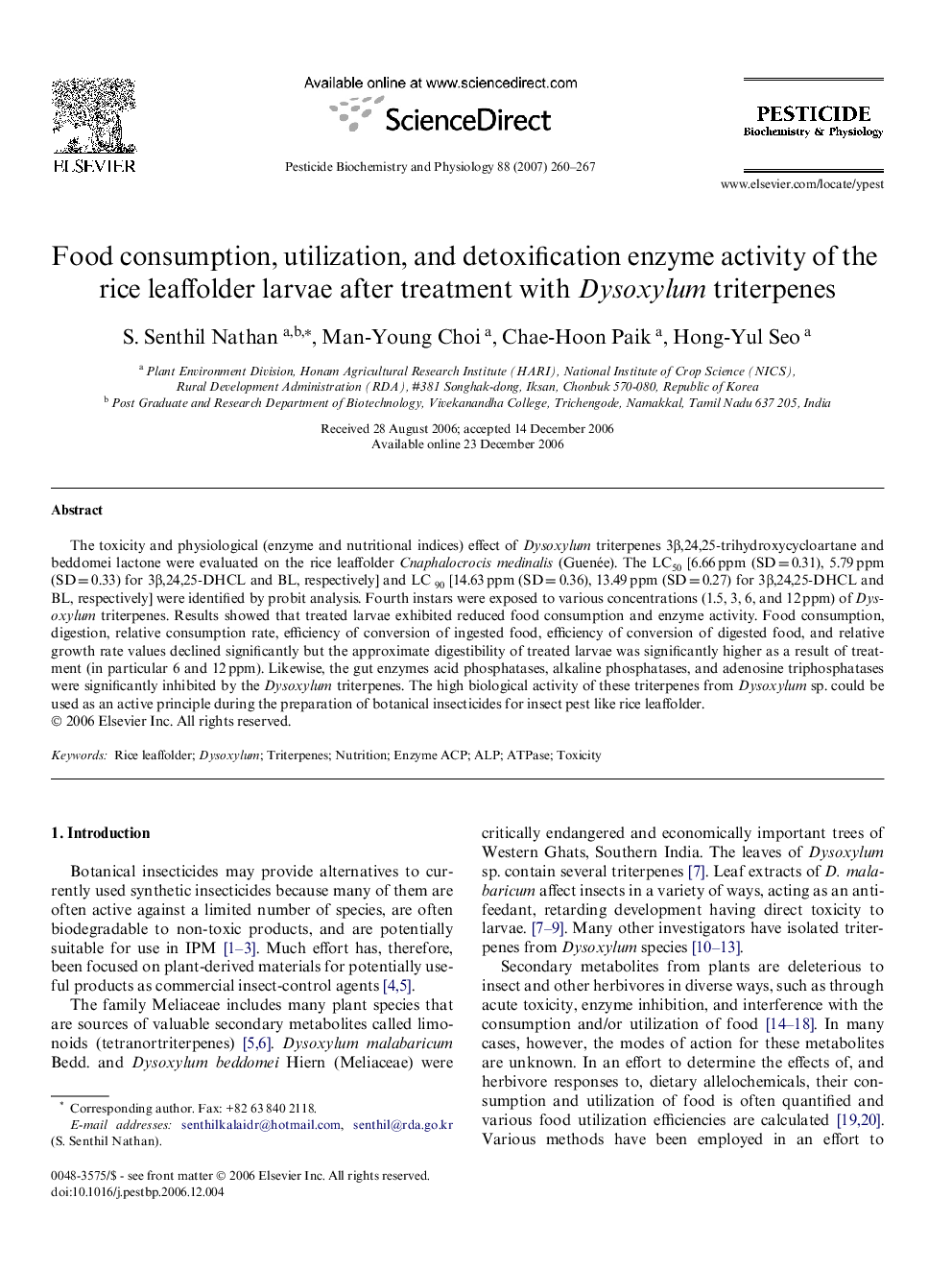| Article ID | Journal | Published Year | Pages | File Type |
|---|---|---|---|---|
| 2009839 | Pesticide Biochemistry and Physiology | 2007 | 8 Pages |
The toxicity and physiological (enzyme and nutritional indices) effect of Dysoxylum triterpenes 3β,24,25-trihydroxycycloartane and beddomei lactone were evaluated on the rice leaffolder Cnaphalocrocis medinalis (Guenée). The LC50 [6.66 ppm (SD = 0.31), 5.79 ppm (SD = 0.33) for 3β,24,25-DHCL and BL, respectively] and LC 90 [14.63 ppm (SD = 0.36), 13.49 ppm (SD = 0.27) for 3β,24,25-DHCL and BL, respectively] were identified by probit analysis. Fourth instars were exposed to various concentrations (1.5, 3, 6, and 12 ppm) of Dysoxylum triterpenes. Results showed that treated larvae exhibited reduced food consumption and enzyme activity. Food consumption, digestion, relative consumption rate, efficiency of conversion of ingested food, efficiency of conversion of digested food, and relative growth rate values declined significantly but the approximate digestibility of treated larvae was significantly higher as a result of treatment (in particular 6 and 12 ppm). Likewise, the gut enzymes acid phosphatases, alkaline phosphatases, and adenosine triphosphatases were significantly inhibited by the Dysoxylum triterpenes. The high biological activity of these triterpenes from Dysoxylum sp. could be used as an active principle during the preparation of botanical insecticides for insect pest like rice leaffolder.
